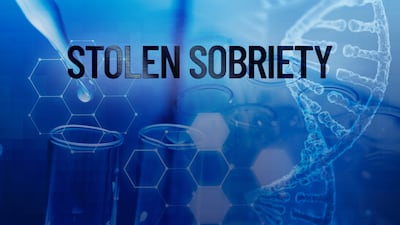“Big Beautiful Bill” Restricts Safety Net Programs, Spells Trouble for Seattle’s Vulnerable – International Examiner

Analysis of H.R. 1 (“One Big Beautiful Bill Act”) and its Implications for Sustainable Development Goals in Seattle’s Chinatown-International District
Executive Summary
On July 4, 2025, H.R. 1, the “One Big Beautiful Bill Act,” was signed into law. This budget reconciliation bill introduces significant fiscal changes, including permanent tax cuts benefiting high-income individuals and increased spending on defense, border security, and fossil fuel production. These expenditures are offset by substantial restrictions on federal healthcare and nutrition programs, which disproportionately affect low-income and vulnerable populations. This report analyzes the legislation’s provisions and its projected impacts, with a specific focus on Seattle’s Chinatown-International District (C-ID). The bill’s measures are found to be in direct opposition to several United Nations Sustainable Development Goals (SDGs), including SDG 1 (No Poverty), SDG 2 (Zero Hunger), SDG 3 (Good Health and Well-being), SDG 7 (Affordable and Clean Energy), SDG 10 (Reduced Inequalities), and SDG 11 (Sustainable Cities and Communities). In response, local community organizations are mobilizing to mitigate the adverse effects, exemplifying SDG 17 (Partnerships for the Goals).
Legislative Background and Provisions
Passage of H.R. 1
Following a 2024 electoral platform focused on tax reductions and decreased federal spending on social programs, the administration applied significant pressure on Congress to pass H.R. 1. The bill was narrowly approved through the following votes:
- Senate: Passed 51-to-50 on July 1, 2025, with a tie-breaking vote from the Vice President.
- House of Representatives: Approved 218-to-214 on July 3, 2025.
The bill was officially signed into law on July 4, 2025.
Key Legislative Provisions and Contradiction with SDGs
The primary components of H.R. 1 include:
- Tax Policy: Makes permanent the 2017 Tax Cuts and Jobs Act, including deductions and estate tax reductions that primarily benefit wealthy households. This policy risks widening the wealth gap, undermining SDG 10 (Reduced Inequalities).
- Budgetary Allocations: Increases funding for defense, border security (including Immigration and Customs Enforcement – ICE), and fossil fuel-based energy production. The prioritization of fossil fuels directly contradicts SDG 7 (Affordable and Clean Energy) and global climate targets.
- Social Program Restrictions: Imposes new, stricter eligibility requirements for government-sponsored healthcare (Medicaid) and nutrition (Supplemental Nutrition Assistance Program – SNAP) programs. These measures directly threaten progress on SDG 1 (No Poverty), SDG 2 (Zero Hunger), and SDG 3 (Good Health and Well-being).
New requirements for benefit recipients include:
- Work Mandates: A monthly requirement of 80 hours of work, community service, education, or job training.
- Increased Administrative Burden: Eligibility renewals are required every six months, increasing paperwork and creating barriers to access for vulnerable individuals.
Impact Assessment on Washington State and the City of Seattle
State-Level Concerns
State leaders have expressed significant concern over the bill’s ramifications. In a February 2025 report, Senator Maria Cantwell projected that H.R. 1 would strain Washington State’s budget, weaken its healthcare system, and risk the health coverage of hundreds of thousands of residents. Ingrid Ulrey, CEO of the Washington Health Benefit Exchange, stated on July 3, 2025, that the changes “will impact the availability and affordability of health coverage, making Washingtonians sicker, will make our health care delivery system weaker, and create ripple effects that will be felt for decades.”
Municipal-Level Response
The Seattle City Council convened the Select Committee on Federal Administration and Policy Changes to address H.R. 1. On July 18, 2025, councilmembers voiced concerns about the bill’s impact on the city’s most vulnerable populations, including the unhoused. They highlighted potential security challenges arising from restricted access to mental health and substance use intervention services, which are critical for maintaining SDG 11 (Sustainable Cities and Communities).
Socio-Economic Impact on Chinatown-International District (C-ID) and Alignment with SDGs
Vulnerability Profile of the C-ID
The C-ID is a community characterized by significant socio-economic vulnerabilities, making its residents particularly susceptible to the impacts of H.R. 1. According to a 2023 Seattle Department of Neighborhoods snapshot, the C-ID exhibits disparities that underscore the challenge of achieving SDG 1 (No Poverty) and SDG 10 (Reduced Inequalities):
- Poverty Rate: Nearly 30% of residents live below the poverty level (compared to 10% citywide).
- Median Household Income: $39,171 (compared to $105,391 citywide).
- Housing: 95% of residents are in renter households (compared to 55% citywide).
- Language Barriers: 43% are non-English language speakers (compared to 22% citywide).
Impact on SDG 1 (No Poverty) and SDG 10 (Reduced Inequalities)
The restrictions on social safety nets are expected to deepen poverty and inequality in the C-ID. Jade Yan, Resident Services Manager at the Seattle Chinatown International District Preservation and Development Authority (SCIDpda), noted the immediate impact: “We’ve heard through our Resident Services and building staff that at least two families have shared they’ve been affected by the Medicaid and Medicare cuts and have lost their coverage… Many low-income households depend on programs like Medicaid, Medicare, and SNAP which will be slashed.”
Impact on SDG 2 (Zero Hunger)
Cuts to SNAP benefits are projected to increase food insecurity, placing additional strain on community-based resources and hindering progress toward SDG 2 (Zero Hunger). G de Castro, Deputy Director of the Asian Counseling Referral Service (ACRS), stated, “Cutting essential programs like SNAP, which support food security for low-income households, will likely increase demand at local food banks, including the one operated by ACRS in Seattle’s Chinatown-International District.”
Impact on SDG 3 (Good Health and Well-being)
The legislation poses a severe threat to SDG 3 (Good Health and Well-being) by limiting access to healthcare for marginalized groups. For immigrant and refugee communities, de Castro warned, “these cuts could be a matter of life or death.” The bill jeopardizes the operations of Federally Qualified Health Centers (FQHCs) like International Community Health Services (ICHS) and the Seattle Indian Health Board (SIHB), which are mandated by Section 330 of the Public Health Service Act to serve all patients regardless of their ability to pay. Esther Lucero, CEO of SIHB, noted that 58% of their patients in 2024 were covered by Medicaid. Kelli Nomura, CEO of ICHS, added, “This bill disproportionately harms communities that have already been marginalized and are historically underinvested in… We’re particularly concerned about immigrant elders, limited-English speakers, and families with mixed immigration statuses.”
Impact on SDG 11 (Sustainable Cities and Communities) and SDG 16 (Peace, Justice and Strong Institutions)
The bill’s provisions threaten the social fabric and inclusivity central to SDG 11. Increased funding for ICE, coupled with a rise in deportation flights, sends a “chilling message to immigrant communities,” according to Nomura. This erodes trust in public institutions, working against the aims of SDG 16 (Peace, Justice and Strong Institutions). The targeting of immigrant communities, as noted by Tsuru for Solidarity, creates a climate of fear that undermines community health and safety.
Community Response and Mitigation Strategies: Fostering SDG 17 (Partnerships for the Goals)
Strategic Actions by Community Organizations
In line with SDG 17 (Partnerships for the Goals), community health centers and service providers in the C-ID are collaborating to counteract the negative impacts of H.R. 1. Their strategies include:
- Advocacy and Awareness: ACRS is engaging with elected officials to communicate the harmful consequences of the bill on vulnerable communities.
- Resource Diversification: Organizations are actively seeking alternative funding sources to fill the gaps created by federal cuts.
- Enhanced Case Management: SIHB is increasing its capacity to provide case management services to help clients navigate the complex new paperwork and eligibility requirements for Medicaid.
- Operational Preparedness: ICHS leadership anticipated the bill’s passage and has prepared to ensure operational stability, though Nomura cautions, “continued disinvestment in safety-net programs puts pressure on community health centers to do more with less.”
Call to Action and Civic Engagement
Community leaders are urging residents to remain engaged and advocate for their rights and services, a key component of building the responsive institutions envisioned in SDG 16. Esther Lucero emphasized the importance of civic action, stating, “It’s important for folks to continue to call their legislators, because this actually doesn’t go into effect, I believe, until 2026.” All organizations encourage community members to continue accessing their services despite the new challenges.
Analysis of Sustainable Development Goals in the Article
Which SDGs are addressed or connected to the issues highlighted in the article?
-
SDG 1: No Poverty
- The article directly addresses poverty by discussing restrictions on social safety net programs for low-income citizens. It highlights the vulnerability of residents in Seattle’s Chinatown-International District (C-ID), where “almost 30% of C-ID’s residents live below the poverty level.” The cuts to programs like Medicaid and SNAP are presented as measures that will exacerbate poverty for these vulnerable populations.
-
SDG 2: Zero Hunger
- The article connects to this goal through its focus on the Supplemental Nutrition Assistance Program (SNAP). The new law imposes restrictions on SNAP, which is a key program for ensuring food security. The text notes that cutting such programs “will likely increase demand at local food banks, including the one operated by ACRS in Seattle’s Chinatown-International District,” directly linking the policy change to a potential rise in food insecurity.
-
SDG 3: Good Health and Well-being
- This is a central theme of the article. The law’s restrictions on government-sponsored healthcare, specifically Medicaid, are the primary concern. The article quotes officials who state the bill will “put hundreds of thousands of Washingtonians at risk of losing their coverage,” make them “sicker,” and weaken the “health care delivery system.” It also mentions concerns over restricted services for “mental health, substance use prevention, and intervention services.”
-
SDG 10: Reduced Inequalities
- The article is fundamentally about how the new law increases inequality. It contrasts permanent tax cuts that “primarily benefit the wealthy” with restrictions on programs for “low-income and disabled citizens.” It emphasizes the disproportionate harm to marginalized communities, including “immigrant and refugee communities,” “immigrant elders, limited-English speakers, and families with mixed immigration statuses,” who are described as “the first to feel the impact and the last to recover.”
-
SDG 11: Sustainable Cities and Communities
- The analysis is framed within a specific urban community, the C-ID. It discusses the provision of basic services and affordable housing within this neighborhood, noting that SCIDpda manages “555 units of affordable housing.” The threat to healthcare and nutrition services for the residents of this “unique ethnic neighborhood” directly relates to making cities and human settlements inclusive and safe.
-
SDG 16: Peace, Justice and Strong Institutions
- The article touches on this goal by discussing the legislative process of H.R. 1, the community’s advocacy response, and the impact of institutional policies on human rights. The increased budget for Immigration and Customs Enforcement (ICE) and the rise in deportation flights are presented as institutional actions that create fear and trauma, undermining justice for immigrant communities. The bill is described as a policy that could be seen as discriminatory in its effects.
What specific targets under those SDGs can be identified based on the article’s content?
-
Target 1.3: Implement nationally appropriate social protection systems and measures for all… and achieve substantial coverage of the poor and the vulnerable.
- The article discusses the opposite of this target. The law imposes “restrictions to government-sponsored healthcare and nutrition programs” and tightens eligibility for the social safety net programs (Medicaid, SNAP), thereby reducing, rather than achieving, substantial coverage for the poor and vulnerable.
-
Target 2.1: By 2030, end hunger and ensure access by all people, in particular the poor and people in vulnerable situations… to safe, nutritious and sufficient food all year round.
- The cuts to SNAP directly undermine this target by making it harder for low-income households to access sufficient food. The article states that these cuts “support food security for low-income households” and that reducing them will increase reliance on food banks.
-
Target 3.8: Achieve universal health coverage, including financial risk protection, access to quality essential health-care services…
- The article details how the bill moves away from this target. It is projected to reduce the “availability and affordability of health coverage,” leading to Washingtonians losing their coverage and making the state’s uninsured rate worse. The text explicitly mentions that Federally Qualified Health Centers (FQHCs) are obligated to provide care regardless of ability to pay, but the new law puts this system under immense pressure.
-
Target 10.2: By 2030, empower and promote the social, economic and political inclusion of all, irrespective of… origin, or economic or other status.
- The bill is shown to be exclusionary. It “disproportionately harms communities that have already been marginalized,” such as low-income residents, immigrants, and non-English speakers in the C-ID. By creating barriers to essential services, it actively works against their social and economic inclusion.
-
Target 10.4: Adopt policies, especially fiscal, wage and social protection policies, and progressively achieve greater equality.
- The fiscal policy described in the article—making “tax cuts from Trump’s 2017 Tax Cuts and Jobs Act” permanent while cutting social protection—is a direct move away from achieving greater equality. It benefits the wealthy at the expense of social safety nets for the poor.
-
Target 11.1: By 2030, ensure access for all to adequate, safe and affordable housing and basic services…
- The article highlights threats to “basic services” for residents of the C-ID. The cuts to Medicaid and SNAP jeopardize access to essential health and nutrition services for a community where many live in affordable housing and depend on these programs.
-
Target 16.B: Promote and enforce non-discriminatory laws and policies for sustainable development.
- The article implies that H.R. 1 is a discriminatory policy in its effect. It is described as sending a “chilling message to immigrant communities: that their health and safety are less valued than surveillance and enforcement” and harming marginalized groups far more than others.
Are there any indicators mentioned or implied in the article that can be used to measure progress towards the identified targets?
-
Proportion of population living below the national poverty line.
- The article provides a direct indicator for this: “almost 30% of C-ID’s residents live below the poverty level (vs. 10% citywide).” This serves as a baseline to measure the impact of the new law.
-
Proportion of population covered by social protection programs.
- The article implies this indicator by discussing the loss of coverage. It mentions “hundreds of thousands of Washingtonians at risk of losing their coverage” and that “58% of total patients served at SIHB in 2024 are with Apple Health, which is what Medicaid is called in Washington State.” Tracking the change in this percentage would be a key indicator.
-
Prevalence of food insecurity.
- This is implied through the statement that cuts to SNAP “will likely increase demand at local food banks.” An increase in the number of people using food banks would serve as an indicator of rising food insecurity.
-
Proportion of population with health insurance coverage.
- The article directly references this indicator by quoting an official concerned about “reducing the uninsured rate in our state.” The impact of the bill would be measured by a change in this rate.
-
Number of refugees or migrants affected by policy changes.
- A specific indicator is provided: “in the first half of 2025 alone–1,342 migrants have been boarded on so-called “ICE Air” deportation flights… This sum is already more than the total number of deportees in all of 2024.” This quantifies the impact of increased funding for immigration enforcement.
-
Median household income.
- The article provides a baseline indicator of inequality: “C-ID has a median household income of $39,171 (vs. $105,391 citywide).” This data point can be used to track economic disparities.
SDGs, Targets, and Indicators Table
| SDGs | Targets | Indicators |
|---|---|---|
| SDG 1: No Poverty | 1.3: Implement nationally appropriate social protection systems and measures for all… and achieve substantial coverage of the poor and the vulnerable. |
|
| SDG 2: Zero Hunger | 2.1: End hunger and ensure access by all people… to safe, nutritious and sufficient food all year round. |
|
| SDG 3: Good Health and Well-being | 3.8: Achieve universal health coverage, including financial risk protection, access to quality essential health-care services… |
|
| SDG 10: Reduced Inequalities | 10.2: Empower and promote the social, economic and political inclusion of all.
10.4: Adopt policies, especially fiscal… and social protection policies, and progressively achieve greater equality. |
|
| SDG 11: Sustainable Cities and Communities | 11.1: Ensure access for all to adequate, safe and affordable housing and basic services… |
|
| SDG 16: Peace, Justice and Strong Institutions | 16.B: Promote and enforce non-discriminatory laws and policies for sustainable development. |
|
Source: iexaminer.org

What is Your Reaction?
 Like
0
Like
0
 Dislike
0
Dislike
0
 Love
0
Love
0
 Funny
0
Funny
0
 Angry
0
Angry
0
 Sad
0
Sad
0
 Wow
0
Wow
0



























;Resize=805#)


















































